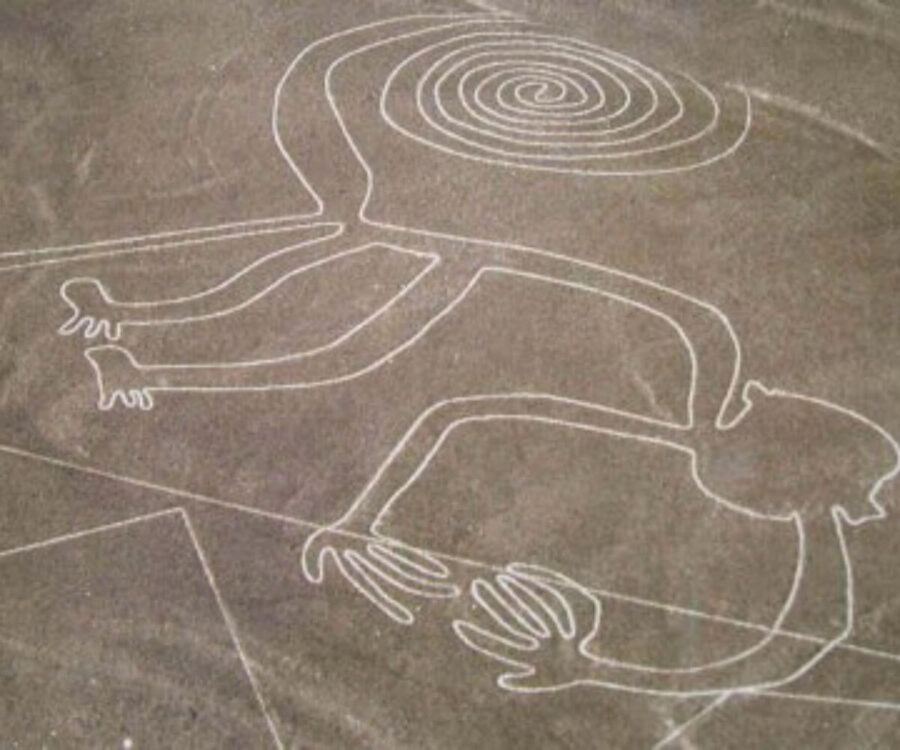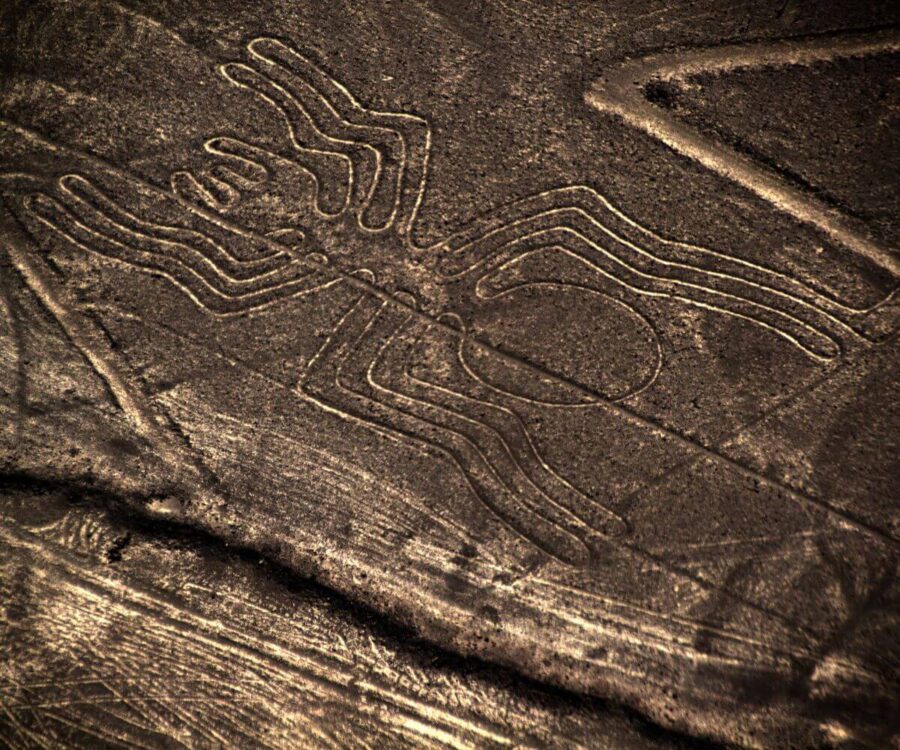The Nazca Lines, located in the Peruvian desert, are famous for their size, precision, and mystery. In this article, we will share with you their history, significance, and how to visit them. Don’t wait any longer to appreciate their majesty.
Table of Contents
The Nazca Lines, located in the desert, are geoglyphs created between 500 B.C. and 500 A.D. by the Nazca culture. They represent animals, plants, and geometric figures; their size ranges from a few meters to over 200 meters. Although their exact purpose is unknown, some theories suggest religious, astronomical functions, or that they served as maps for water sources.
They were first documented in 1927 by Peruvian archaeologist Toribio Mejía Xesspe, but gained notoriety in the 1930s with the advent of commercial flights. Several researchers, such as María Reiche and Paul Kosok, suggested that the lines had astronomical functions, but their purpose remains a mystery.
These geoglyphs include figures of animals, plants, and geometric shapes, some over 200 meters in length. They are completely visible from the air and are notable for their precision and complexity.

The Nazca Lines are located in the Ica region, between Nazca and Palpa, in a desert with a dry climate that has helped preserve them. The lack of rain and the stability of the terrain have allowed the figures to remain intact over time.
The best way to view the Nazca Lines is by flying over them in a small plane, with 30-minute flights that show the main figures. It is recommended to book in advance and choose certified operators for a safe experience.
Another option is the Nazca lookout, from where some figures can be seen, although it offers a limited view. If you want a more complete experience, you can combine the flight with a visit to the Antonini Museum, which provides information about the Nazca culture and the lines.
In recent years, the use of drones and satellite analysis has allowed the discovery of new geoglyphs in Nazca, expanding the catalog of known figures. These discoveries include representations of humans, animals, and previously unknown geometric shapes, which continue to generate interest in their purpose.
In 2020, Peruvian archaeologists discovered a 37-meter feline figure on a hill that had previously gone unnoticed. This and other recent discoveries highlight the importance of preserving and studying this cultural heritage.
The Nazca Lines demonstrate the skill of the Nazca culture, which removed the surface layer of the desert to create figures visible from afar. It is theorized that they used simple tools and ropes to maintain precision and proportions; moreover, the dry climate of the region has helped preserve the lines over time.
Over the years, various theories have been proposed to explain the purpose of the Nazca Lines. Below are some of the most prominent:

At one point, it was said that the lines were landing strips for extraterrestrials, a theory popularized in the 1960s, but it lacks scientific evidence and is rejected by the academic community.
Some researchers suggest that they were ceremonial pathways for religious rituals, connecting the population with their gods or natural forces, such as water. On the other hand, the figures, seen from the sky, may have been a way of communicating with celestial beings.
Another hypothesis suggests that they had a religious purpose, representing offerings to the gods or maps to guide spirits. This interpretation is based on the spiritual connection of ancient cultures with their natural environment.
One supported theory holds that they were an astronomical calendar, marking the positions of the sun, moon, and stars to predict seasonal and climatic events, as the patterns of the figures align with celestial phenomena, which supports this hypothesis.
Anthony Aveni and Helaine Silverman proposed that they were a system to organize social and territorial areas, marking ceremonial zones and symbolizing unity among communities. This highlights both their practical function and symbolic meaning.
There are many documentaries on this topic, but the most recommended one is the one produced by National Geographic, which combines stunning aerial footage with expert interviews. The visual content provides a unique and detailed perspective of the geoglyphs and their significance in human history.
Come to Peru and discover the beautiful Nazca Lines, as it is a place you cannot miss. Trust us and let us take you to these geoglyphs. Contact us at Phone+51 984 550 165 or by Emailventascusco@terandes.com. Don’t wait any longer!
